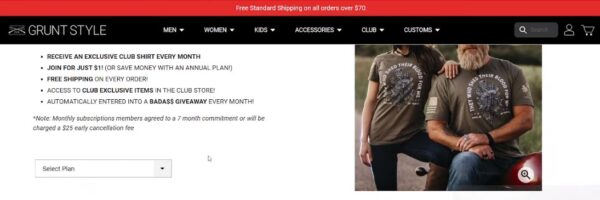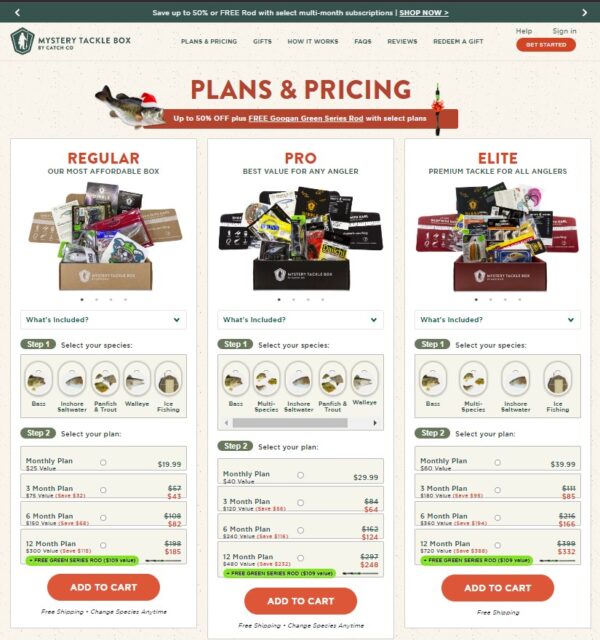Ecom Tip: The ONE Thing You Must Do for Recurring Revenue

Brad Owens | Dec 30, 2021
Reading Time: 4 minutesIf you’re an ecommerce business owner, you may have toyed with the idea (or maybe you’re considering it right now) of adding recurring revenue to your store. If so, I want to make sure you’re aware of the essential element you do not want to overlook.
Risky Business
Recurring revenue should be a key consideration when it comes to your ecom business, but there’s one essential element that is often disregarded, and that is being laser-focused on reducing—or better yet, eliminating—all risk to your customers.
If you’re asking people to subscribe to something, that’s even riskier than just ordering a product because it requires them to make a commitment. So, you need to answer any questions they may have from the get-go. And you can do this in a myriad of ways—with infographics, product copy, videos, images, and so on. Whatever method you choose, you need to address all possible questions and objections. This is something you should strive for regardless, but all the more if you’re asking for any kind of commitment.
And if you’re thinking having “Subscribe and Save” will let you off the hook … Think again. While your customers are gaining a benefit (i.e., saving money) in exchange for subscribing, you still need to address concerns about canceling or pausing a subscription, switching products, upgrading, downgrading, etc. in order to minimize or eliminate their risk.
Awesome Real-life Example
This page is for a Mystery Tackle Box subscription on shopkarls.com; I believe they get over 150,000 monthly subscriptions.
You’ll notice they clearly communicate the following:
- “Mystery Tackle Box”
- “Free shipping & cancel any time.”
- “You may change species any time.”
They also have images (with “Free shipping” UVP badges) showing the components of the different boxes, the price of each box, and messaging saying, “Cancel or upgrade any time,” “Cancel or change any time,” and “Cancel or downgrade any time.” And then again, underneath that, they state that you can change species at any time.
Next, you can select a species and either a monthly, 3-month, 6-month, or 12-month plan, with additional savings the longer you commit.
Below that, they have an infographic (with UVP icons) that says, “Why subscribe?” as well as reviews, including a Trust Pilot rating with 7,145 reviews.

So, as you can see, they’re leaving nothing open to speculation here. No stone is unturned, and they seem to be answering every question a customer could possibly have. That’s exactly what you want to do on your ecommerce store.
Terrible Real-life Example
In contrast, we have this shirt-of-the-month club. They have a handful of bullet points about their subscription but are certainly not answering every question their customers have about committing to subscribe. And then they have the disclaimer below:

This company can get away with something like this a little bit because of their strong brand and loyal following. However, I’d be willing to bet that they’re leaving a ton of money on the table from people that won’t even consider signing up for their subscription because of this policy. In fact, I wouldn’t be surprised if they lose sales for regular products on their site because of it.
If you look at a site like Stitch Fix, on the other hand, they send the products out with a prepaid mailer, you return anything you don’t want, and only pay for the items you keep. This is a total 180 from the previous example, where the customer was taking on all the risk. Stitch Fix is eliminating 99% of the risk to the customer and taking it on themselves … And they’re a billion-dollar company (just saying).
Wrap-up
So, let’s do a quick recap:
- If you have a continuity program, and really everybody should (even if it’s a digital product, like a monthly newsletter or something), the number one thing you need to focus on is eliminating all the risk for your customers.
- Provide crystal clarity and answer any questions your customers may have through your copy, images, videos, infographics, etc.
- Make your policies, and site in general, as customer-centric and -friendly as possible because at the end of the day, it’s about them … not you.
The safer you make it for people to buy from or commit to you, the more money you’ll make! And that’s always a good thing.
I hope you enjoyed today’s training. If you’re interested in working with Build Grow Scale or learning more about Revenue Optimization™, go to workwithbgs.com to schedule a free strategy session with one of our experts. We’d love to learn more about you and your ecom business and come up with a plan to build, grow, or scale it to the next level!
About the author
Brad Owens
Brad Owens is a BGS Revenue Optimization expert, instructor, and coach with Ecommerce Business Blueprint (EBB) and EBB Elite. He started working in ecommerce back when Amazon had auctions (hint: that was a long time ago!) and has extensive experience with marketplaces, stores, and retail—even owning a comic shop for eight years. A graduate of the Atlanta Institute of Music, he can sometimes be spotted around Atlanta playing guitar in his hard-rock disco band.








